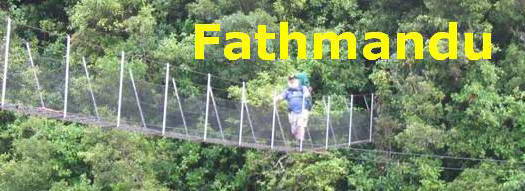The Botany Trail
page 1 of 2
I spent a little time trying to locate information about the botanical features of the stonefields that might warrant a "botany trail", but it was hard to come by and mostly general. I did find this sad little snippet in Rare Bits #38, 2000, a news letter devoted to threatened species:
"Our mawhai,Sicyos australis, at Otuataua
Stonefields is proving to be a little tricky
to manage. After re-locating one plant,
it was promptly eaten by wayward cows.
Another then sprung up and was sprayed
deliberately by an adjacent landowner.
We are waiting and hoping another will
appear. Seed collected off the plants were
taken to the botanic gardens, but they
did not germinate."
Sometimes, even the experts have trouble...
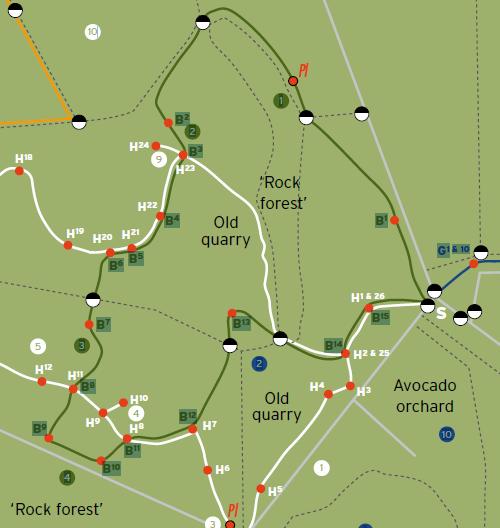
The Botany Trail is marked in green. The map is taken from the Manukau City Council brochure. We start at the second gate, by the white S, where the history and geology trails also begin. We can see what might be B1 down the way a bit, silhouetted against the water. (If you carry on beside the line of macrocarpa you'll reach the coastal walkway at the end.)
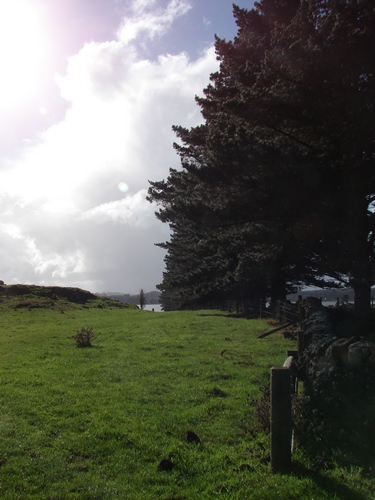
That's B1 all right, and it's the last Bpost we sight for a good while. The next landmark is a plinth over by the rock forest. We also get a little assistance from rocks painted green dotted here and there along the way.
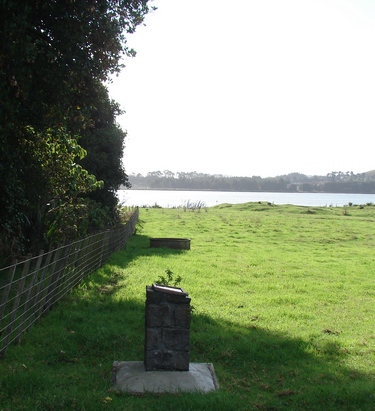
We head for the fence a little to the left of this to get a closer look at the rock forest.
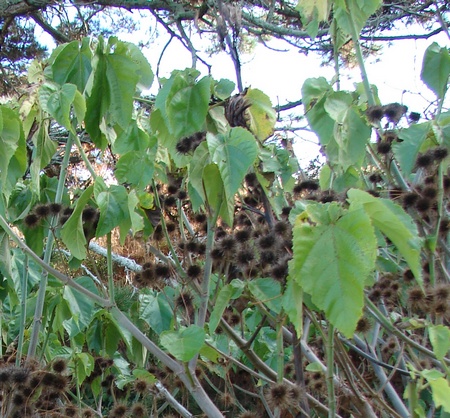
We spot the whau immediately, an amazing wood that is lighter than cork or balsa, with a stunningly attractive white flower, and the only native plant in New Zealand whose seed is protected by a prickly outer coat. It is a favourite tree for "public landscaping" and widely and easily propagated in nurseries for this purpose. Given that the NZ flax plants have taken up their positions at extremely regular intervals along the fence, I take leave to wonder just how much of this "rare fragment of rock forest" has been recreated some time more recently.
There's kawakawa there as well - and inkweed:
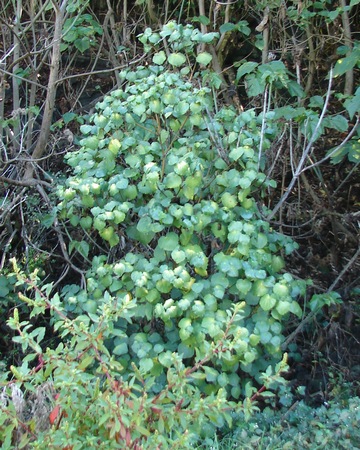
and there's some grand old karaka, puriri, ngaio, and titoki, and I marvel at the ability of these large trees to find a way for their roots to travel through such rocky territory as these sit on.
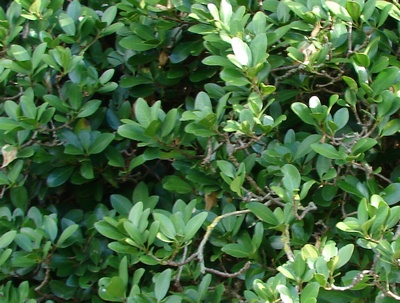
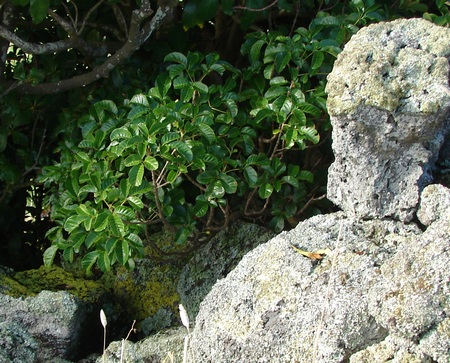
There's cabbage tree
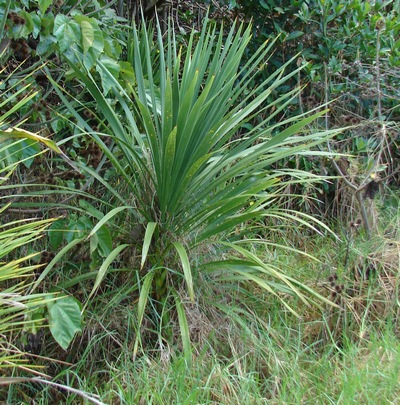
and koromiko
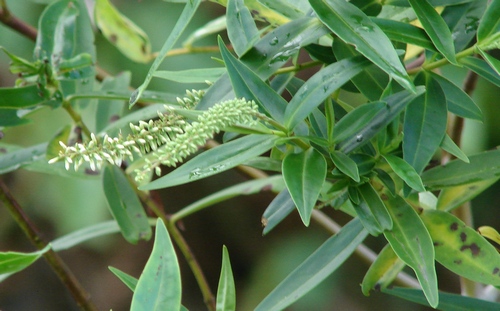
and coprosma species. But they're all doing it hard, as you'd kind of expect from bush growing this close to the sea.
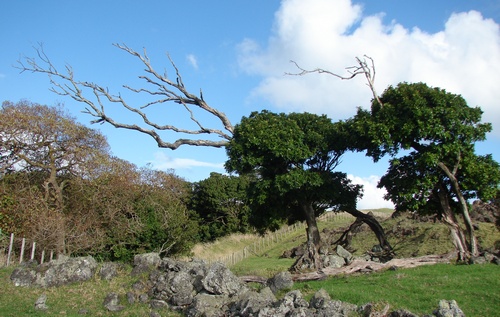
For the rest, the "rock forest" is a bit like the dog that played chess - it didn't play very well, but one marvelled that it played at all. Like many other conservation areas that DoC has been involved in, the word is not so much conservation as simple neglect, as exotic weeds threaten to take over. There simply isn't the manpower or the money to do the job properly given the size of DoC and the area it is responsible for.
When I see at least a dozen sites where Smilax is becoming established, without even looking hard, I am anxious for the future. It is a killer weed, choking everything it covers, very easily spread and very difficult to eradicate. You might get it if you started right now. The sites are newish, the plants are still relatively small.
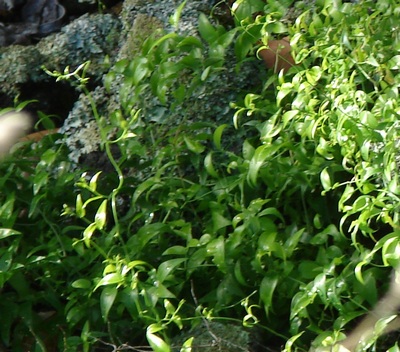
Likewise the kapok vine that will eventually overtake the barberry hedge further over.
When a piece of bush that is described as a "rare fragment of its type" presents like this from the other side of the fence
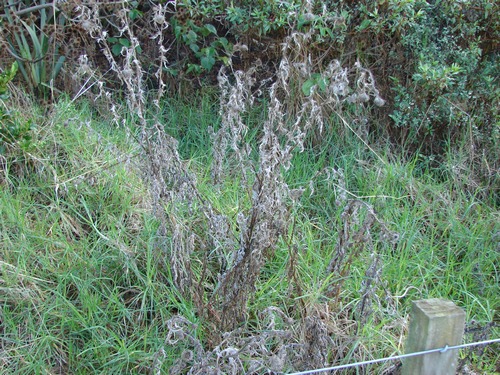
or this
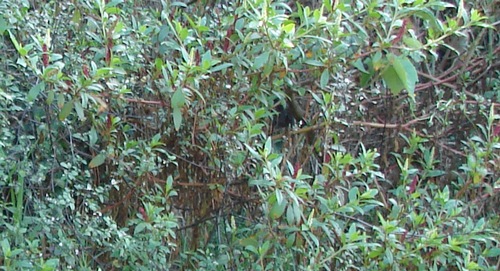
or this
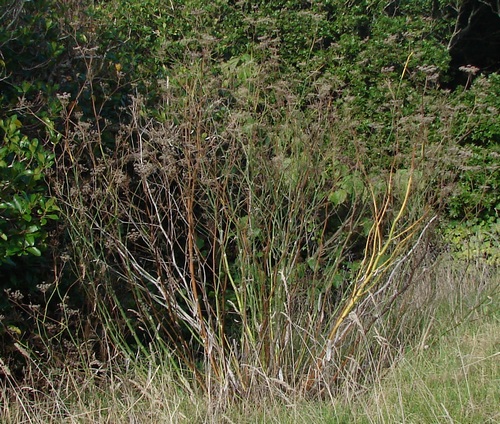
it has been too long since somebody cared.
Down the northern end of the forest fragment are a number of these netting frames supported by stakes. My best guess is that they were very likely placed around mawhai seedlings that were stuck in the ground and left. (What other plant would warrant such "protective" treament. All the other plant varieties listed for the area are present and strongly so.) Nobody has even troubled to remove the netting. It looks like nobody has even been back to check on their progress.
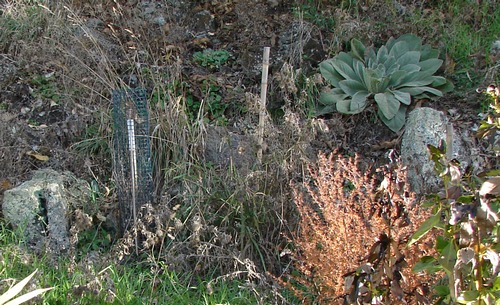
We spot a poison station, on the inside of the fence, and I tell Alice she is to stay away from them. Since the encounter with cows the other day she just loves being right alongside, and pays close attention.
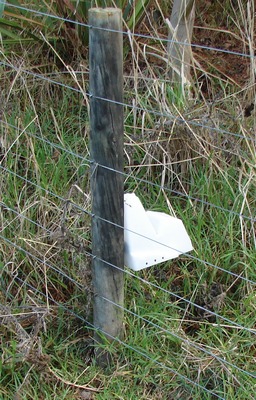
We head down past the plinth and around the corner to the left where a green stone beckons us through a gate
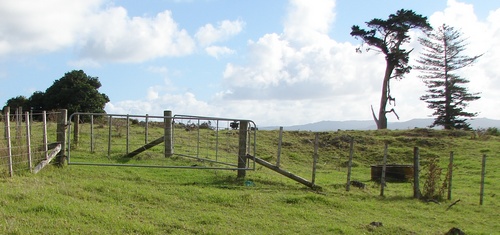
and onto the site of one of the holiday baches that, pre-sewage treament plant, used to provide a welcome getaway for their owners.
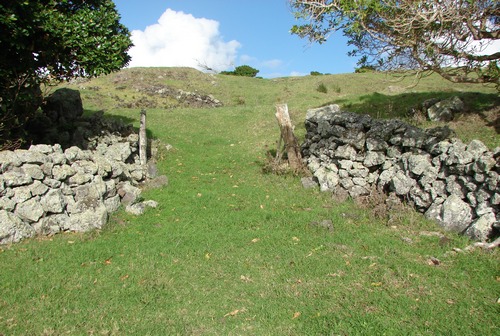
I take it the site is just through this gate and behind the shelter trees, but a careful examination of the surface shows no sign of what might have been there fifty years ago, apart from a roughly rectangular level space. You'd want a bit of shelter from the sea winds and these trees in front would do the job nicely. There's a titoki, a karaka and a weatherbeaten ngaio, all carefully walled around.
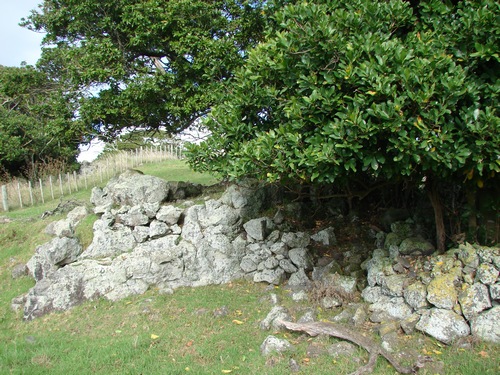
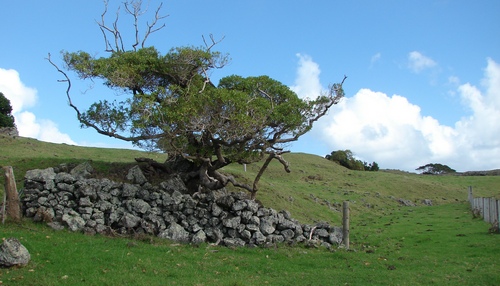
There's obviously been some kind of road through here in the past.
In this photo, if you know what you are doing, you can sight B2 just beneath one of the lower branches on the right of the ngaio, but I miss the point and spend some time wandering up on the western side of the rock forest, and approach B2 by way of B3 which I locate first.
According to Maori legend, a ngaio tree can be seen on the moon. There are several versions of the story, and this is one of my favourites.
"This is the story of Rona, a woman who fights constantly with her husband. One night Rona storms out of her whare after the couple fight about who should fill their tahā (water containers). As Rona walks away, cursing her husband, Marama (the moon) watches and listens.
When a cloud passes in front of the moon, Rona stumbles in the dark. She falls, then curses the moon for her fall. Marama tells Rona, "Be careful what you say, lest you be made to pay". But Rona only yells more insults at Marama, who gets so angry that he reaches down, grabs Rona and pulls her up into the sky. She grasps in vain at the branches of a ngaio tree as she passes it on the way up, but it is uprooted and travels with her to the moon.
The next day Rona's husband searches for his wife but cannot find her. He misses Rona and is sorry he treated her badly. Meanwhile, Marama welcomes Rona and treats her with kindness. Rona gets happier and happier. When Marama asks her one day if she would like to return to earth, Rona realises she loves Marama, so says she wants to stay with him. Touched, Marama gives Rona a special taonga (gift) in return – a korowai (cloak), adorned with stars. Rona then becomes the controller of tides, Rona-whakamau-tai.
The leaves of the ngaio are full of oil spots, and if you hold a leaf up to the light you will see it, like the cloak, full of stars. |
